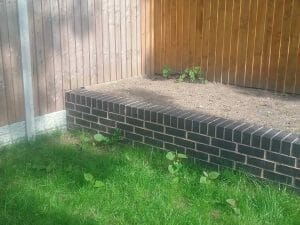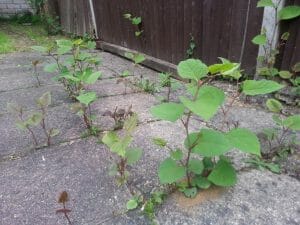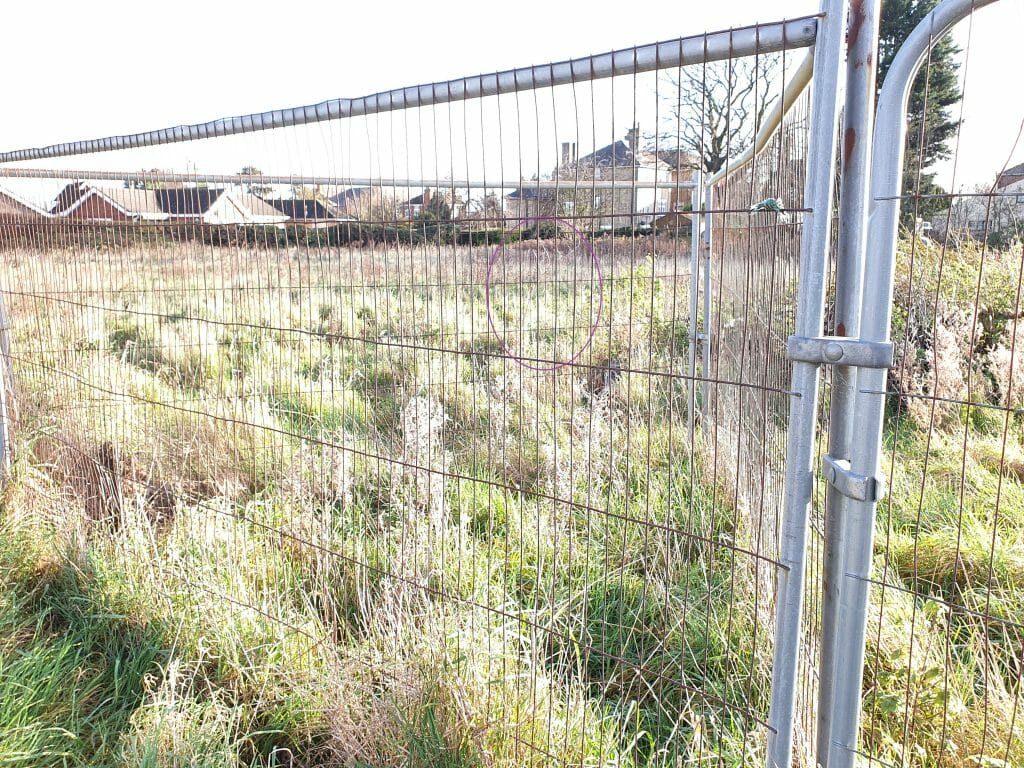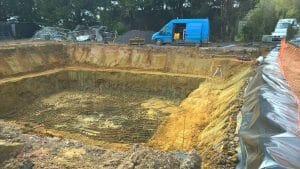
In recent years we have seen a sharp rise in private litigation cases surrounding Japanese knotweed. 2018 saw the first successful documented case law for private nuisance in respect to Japanese knotweed. Now claims for Private Nuisance, Professional Negligence and Misrepresentation are more commonplace.
New-Build House on Knotweed Contaminated Land (Sherwood Homes)
In 2019, Sherwood Homes was found guilty of professional negligence for failing to remediate Japanese knotweed properly prior to building houses on the site.
 Expert evidence confirmed that Japanese knotweed was present on the site at the time of the purchase via photographs provided in the initial knotweed report. Furthermore, there were online Google Earth Street view images providing evidence of a historic infestation of mature Japanese knotweed across a large area of the site.
Expert evidence confirmed that Japanese knotweed was present on the site at the time of the purchase via photographs provided in the initial knotweed report. Furthermore, there were online Google Earth Street view images providing evidence of a historic infestation of mature Japanese knotweed across a large area of the site.
The knotweed expert believed significant rhizome material would have been encountered by the contractors carrying out the earthworks and other general construction works.
The knotweed expert noted that it was likely that the defendant had undertaken a shallow soil “scrape” of the infested area, but such treatment would have been inadequate to remove the plant and prevent recurrence of growth.
The presence of Japanese knotweed at the property was not disclosed at the time of sale.
The defendant did not attend the trial and judgment was awarded in favour of our client in the sum of £52,000 plus £8,433.97 in interest.
Considerations for Developments with Knotweed
Site Vegetation Strip/Clearance
If knotweed is disturbed during vegetation clearance, translocation of the knotweed material to other areas of the site could occur, or even unintentional illegal removal of controlled waste from the site.
Demolition
Demolition could disturb knotweed onsite, resulting in the translocation of knotweed material to other areas of the site or even unintentional illegal removal of controlled waste from the site.
Formation Level Excavations
Groundwork excavation to reach construction formation levels may encounter knotweed contaminated ground. This can result in the translocation of knotweed material presenting structural risk and/or unintentional illegal removal of controlled waste from the site.
Building Foundation Excavations
Groundwork excavation for proposed building foundations may encounter knotweed contaminated ground. This can result in uncontrolled or untreated knotweed rhizome remaining under building footprints, presenting structural risks and/or unintentional illegal removal of controlled waste from the site.
Material Movements and Waste
The development project may necessitate the removal of material from site and/or the importation of soil material onto the site. It is imperative that all necessary steps are taken to ensure these materials are free of knotweed.
Knotweed Impact to New Developments
 If Japanese knotweed is not correctly remediated, there can be severe impact to new developments.
If Japanese knotweed is not correctly remediated, there can be severe impact to new developments.
The Environmental Protection Act 1990 (EPA) governs the disposal of controlled waste, such as Japanese knotweed. There is a penalty of up to £5,000 or 2 years in prison if you allow knotweed contaminated soil or plant material to spread into the wild.
Structural Risk
Japanese knotweed rhizome and crown growth has the potential to cause damage to services, structures and hard standing.
Plot Saleability
Japanese knotweed is a recognised property risk and will be flagged up on building surveys as part of the conveyancing process. Where knotweed has been identified, it can prevent lending agreements; on new residential development site this can stop sales of completed units.
Contamination
Un-managed Japanese knotweed growth can be disturbed by site maintenance activities such as grounds maintenance. This can quickly translocate material to other areas of the site and spread and worsen an infestation and associated risks.
Discovery: What to do
- Where possible, all areas affected by Japanese knotweed should be fenced off and isolated from any activities on site immediately, to avoid potential knotweed spread. The fencing should be erected at least 7 metres away from any visible knotweed growth to protect rhizome disturbance.
- No material is to leave site from the knotweed areas, except as part of specially supervised knotweed treatment works. No new materials should be stored in or adjacent to Japanese knotweed areas.
- Where there is a high risk of knotweed infestation from neighbouring land, contact the landowner and agree on a co-ordinated treatment programme.
- Any presence of knotweed off-site can present the likely potential for re-infestation of the site across site boundaries.

Excavation Options
Complete Excavation & Off-Site Disposal
This provides instant eradication of knotweed, although it’s the least sustainable method of knotweed eradication as the arising waste is transferred to landfill as “controlled waste”.
Our approach and ethos put emphasis firmly on reducing quantities of waste removed to landfill. We accurately identify the location and full extent of the underground knotweed rhizome system. This ensures we only remove knotweed material and soils containing knotweed and not clean soils, therefore, reducing the client’s costs.
This requires a waste carriers license and there will be a full waste tracking record on completion.
Reduced-Level Excavation & Capping
On construction sites the ground levels often need to be reduced to formation level. Where the formation level depth is less than the anticipated depth of knotweed rhizome there is an opportunity to carry out a reduced level dig of the knotweed. The knotweed is excavated to construction formation levels and then capped with suitable knotweed root barriers.
The volume of knotweed waste to be removed from site is reduced and hence cost to the client. The knotweed waste can either be removed off-site or disposed on-site via burial or relocation.
Complete Excavation and On-Site Burial
This provides instant eradication of knotweed, and a sustainable remediation approach, where there is space onsite to accommodate a deep burial pit. Onsite disposal of the waste is often more cost effective than disposal of waste to landfill.

The excavated knotweed is buried deep onsite, with the waste encapsulated in root barrier, creating a cell, with the top of the cell residing at least 2 metres below finished ground levels as a precaution against future accidental human disturbance or burrowing animals.
The dimensions, depth and location of the burial are recorded with the Knotweed Management Plan (KMP) for the site. The KMP should be included in the Operations and Maintenance Manuals for any development site.
Land Remediation Tax Relief (LRTR) can be claimed for disposing of the excavated knotweed on-site
Complete Excavation and On-Site Relocation
Where there is sufficient space on site the knotweed can be fully excavated from its location and relocated to a more desirable location onsite. Often suitable to larger sites, or phased developments, relocation of Japanese knotweed can prove both cost-effective and provide a sustainable remediation solution.
Excavated Japanese knotweed is carefully relocated over site to another area of the same site. In its new location, it is monitored and treated under a longer-term herbicide treatment programme.
The dimensions and location of the relocation are recorded with the Knotweed Management Plan (KMP) for the site. The KMP should be included in the Operations and Maintenance Manuals for any development site.
Contact the Japanese Knotweed Experts
Japanese Knotweed Ltd is a Safety-First, national knotweed company, with industry-leading expertise and an annual turnover of £4.6m.
In 2020 we delivered approximately 200 excavation projects and we currently have over 5000 herbicide customers, completing approximately 12,000 herbicide programme treatment visits annually.
T: 0333 2414 413
E: [email protected]
